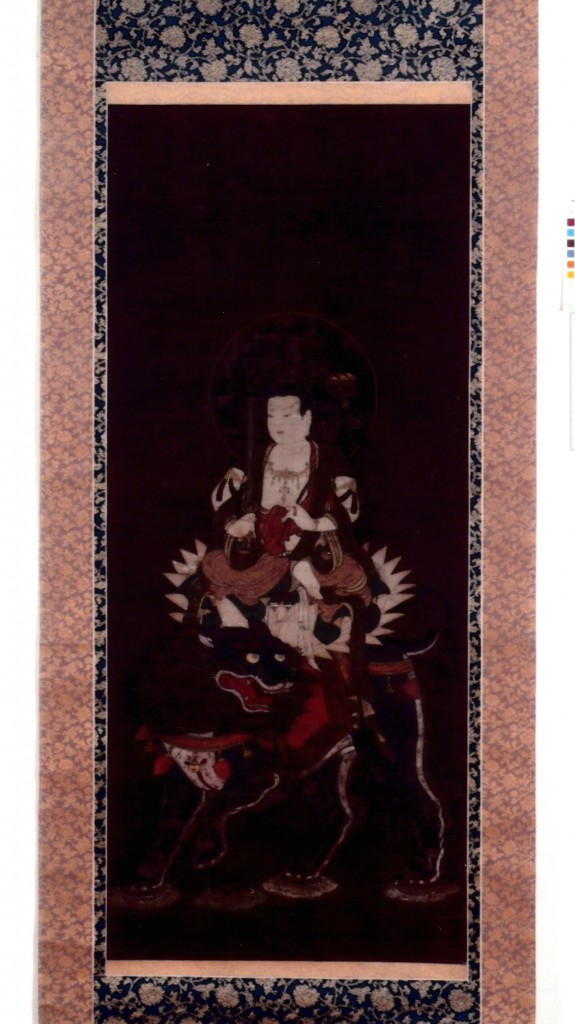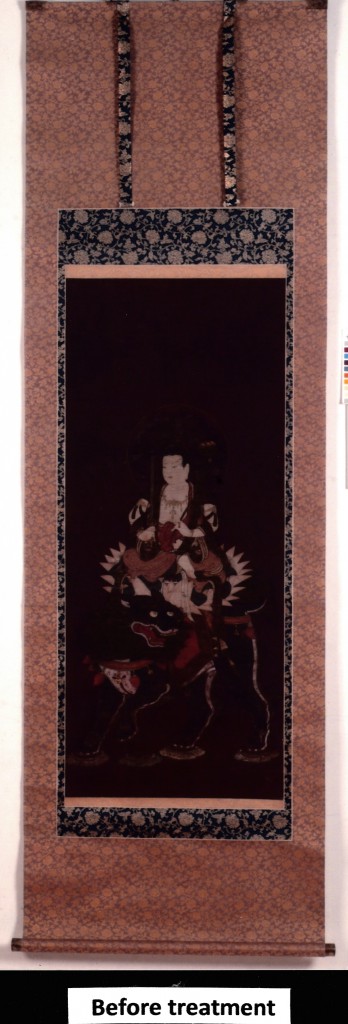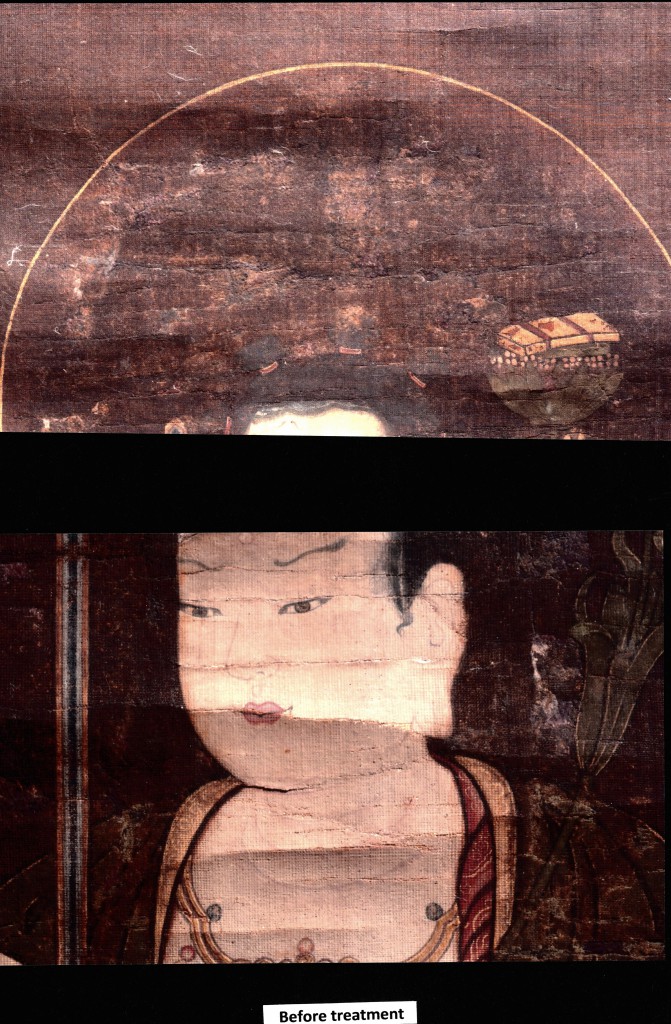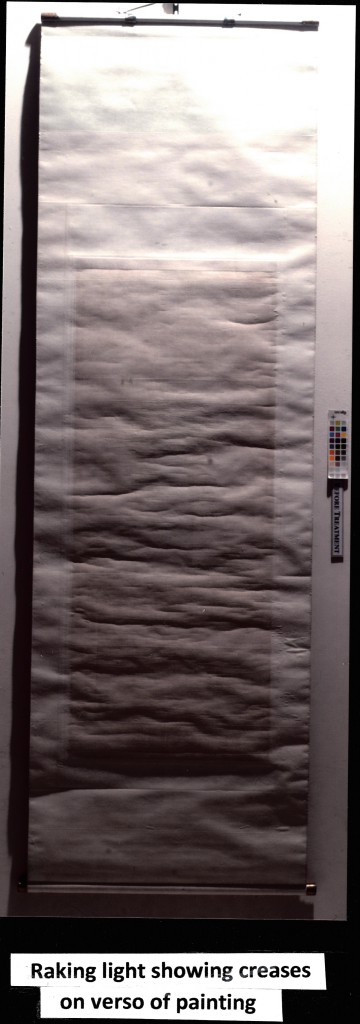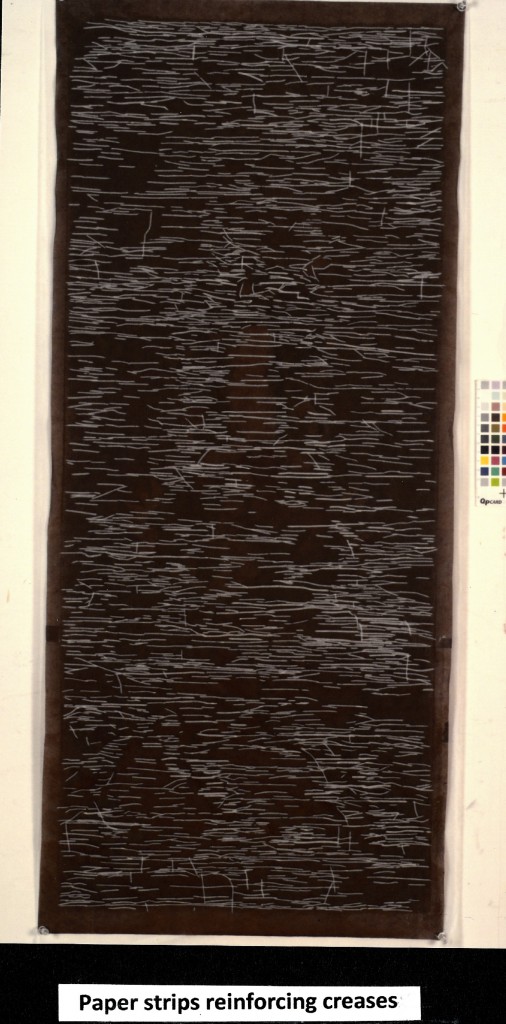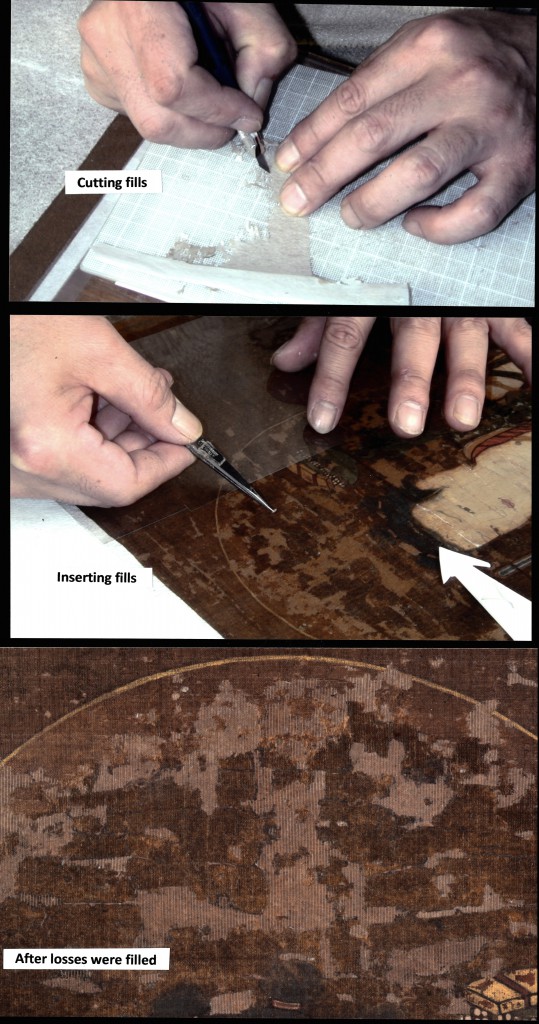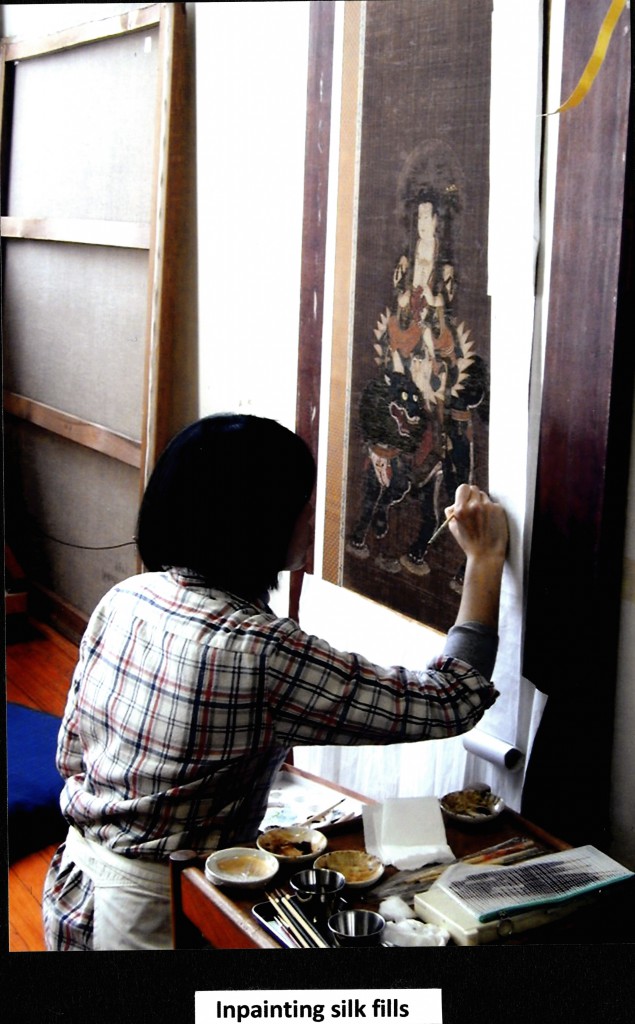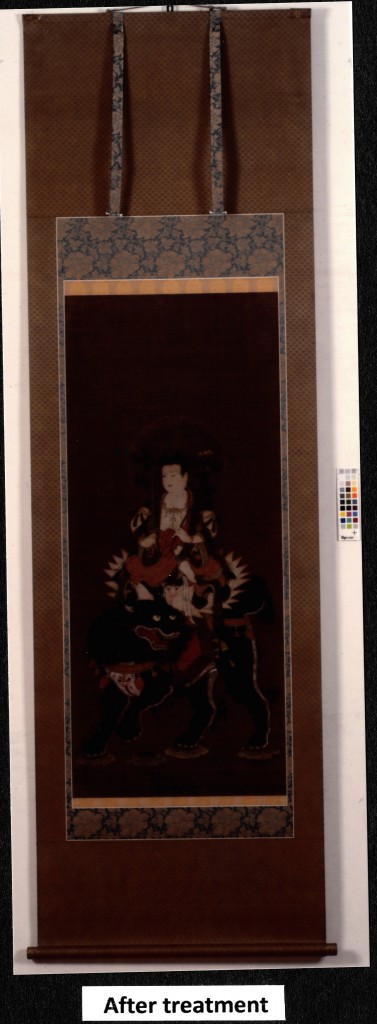Before and After Photos of Monju’s Conservation
Slideshow Images
Image 1: The Monju Scroll before treatment. To begin treatment, the Nishio Conservation studio cleaned the painting surface of dirt, dust, and any foreign accretions.
Image 2: The scroll was disassembled by removing the silk borders with moisture. The acidity of the scroll was also lowered by sprayed water.
Image3: This picture highlights the severe creasing in the Monju scroll. To correct this issue, he entire scroll was reinforced with handmade Japanese paper.
Image 4: Severe creasing was also present in the scroll’s entirety, which can easily be seen on the back of the scroll.
Image 5: The white lines pictured above are the handmade paper reinforcements. This paper is extremely thin, but adheres to the scroll to provide support. These strips were applied to the back of the scroll to fill in creases.
Image 6:Nishio conservators insert fills were paint had flaked off.
Image 7: Conservators painted over the inserted fills on the scroll with artist grade watercolors.
Image 8: This is the Monju Scroll after complete treatment at the Nishio Conservation Studio. After three years of conservation treatment, the Monju Scroll can now be safety displayed in the VMFA.
Textile Lab
Before conservators can move forward with treating an object, it is essential that they analyze a piece in detail, which allows them to determine the entire material make-up. Research is critical; knowing where the object was made and by whom can help conservators make educated decisions concerning the materials that may have been used. However, science helps conservators turn theory into fact. Conservators can examine different strands of material under a microscope to make comparisons and to draw informed conclusions. Protein and cellulose based fibers are made up of differing structures. Cotton fibers would appear different than flax fiber or silk and vice versa. Conservators may also treat cotton (a cellulose fiber) differently than silk (a protein fiber).
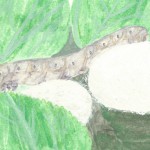
In order for conservators to determine what fibers have been used in a specific work of art they may begin by collecting a few samples of thread . In the version of the lab that we did, we focused on silk.
Pictured is a silk worm with two cocoons. The cocoon itself is produced by the silkworm and made of 100% silk.
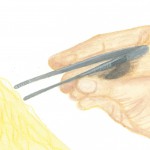
Taking one of the samples collected, we put it on a glass slide, and then placed it under a microscope. After bringing the sample into focus and looking at it with 4x and 10x magnification, we recorded what we saw.
We found that using tweezers was the best way to pick up samples and move them to wherever they needed to go.
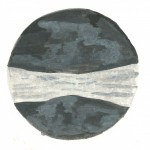
Using the same sample, we took the slide out and put a drop of water on the thread this time. We then placed the slide back under the microscope and brought the thread into focus, again looking at it with 4x and 10x magnification and recording what we saw.
To the left is a drawing done by Grace Bland, member of the Monju Scroll Team, of silk under a microscope.
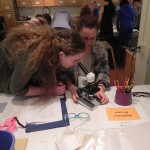
When acquiring a new piece, it’s not always clear what it’s made of. The tests we did in this lab are some of the ways a conservator would test a piece to figure this out. Silk is one of the main materials the scroll is made from. By doing this lab not only did we identify the material, but we now know how to proceed in treating the artwork!
To the right is an image of part of the Monju Scroll team doing this lab!
Explore More:
Monju Scroll: Scroll Through the Past
